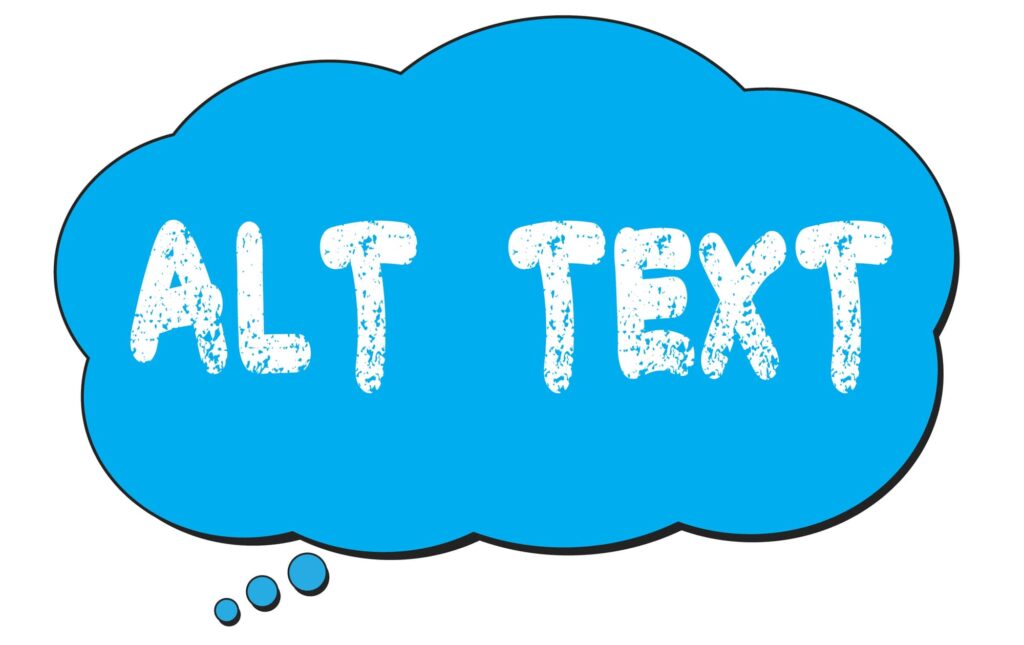A Guide to Crafting Effective Alt Text for Accessibility and SEO

Alt text is an element of web design that many users may never see, but which serves a very important purpose in helping the internet function well. It is essentially descriptive information hidden within the code of a website about a front-facing image. This information is then “read” by search engine crawlers to give context about that image and to help it index. And for disabled users who rely on screen readers, alt text describes the image to these users. So crafting good alt text isn’t just a matter of SEO – it’s a crucial part of creating accessible websites.
What Constitutes “Good” Alt Text?
There are a few core elements that SEO and accessibility experts agree need to be present for alt text to be considered good.
First, the text should be concise. It needs to convey essential details about the image. If you think of alt text as primarily an accessibility tool, and think of your end user first – this is a good way to gauge the effectiveness of your alt text. It needs to describe the most important parts of your image succinctly.
Second, the alt text should also include specific details, focusing on the purpose of the image on the page. It shouldn’t use unnecessary filler words, such as “image of” or “picture of”.
Alt Text: Accessibility Considerations
So, when you create alt text, the end user should be the first thing you think about. Does this alt text serve the end user? Does it help disabled users understand your website and your content?
- Alt text should be descriptive and considerate of your audiences. Clearly describe what is in the image, including any text within it if it’s relevant to the content.
- Think about what information would be useful for someone who cannot see the visual content.
- Use simple, straightforward language – this improves the user experience for those using screen readers.
Alt Text’s Purpose for SEO
Alt text is also a core element of SEO – and this shouldn’t be overlooked when crafting it. So you’ll want to add in keywords to the description – but remember, keywords should be relevant to the image and they should be implemented naturally within the text. Don’t resort to black hat tactics like keyword stuffing – not only is this terrible for UX, but it can end up backfiring when Google’s crawlers go through it.
In addition, focus on the actual image itself. Does it make sense within the page? Does it match up with your written content? Your keywords should all make sense when taken as a whole. And if you can create a harmonious whole, each element increases the likelihood of the page indexing well.
If you can focus on writing meaningful descriptions while organically including keywords, this is a good baseline to follow for both UX and SEO.
Final Thoughts
Good alt text can be a little tricky to create because you need to be very careful to balance the needs of the user with the needs of search engines. In that sense, it is very much like the rest of content creation for websites. Great content not only serves the user – it is also formatted appropriately for search engines to help it index.
Don’t tunnel vision on one perspective or the other. Don’t neglect the needs of your users to serve Google, or vice versa. With a balanced approach, you can get more out of your content and create a more inclusive experience for your user base.
Learn More About How to Create Accessible Content with the Experts at Pink Dog Digital
Ready to embrace inclusivity and create an accessible website that reaches and resonates with everyone? Pink Dog Digital can help! Our team of design and content creation experts specializes in accessible web content creation, interactive web design, email marketing, and social media marketing.
Let’s go beyond compliance together and create a digital experience that is truly accessible for all. Get in touch with us by filling out our online contact form or sending us an email at pi************@***il.com to learn more.

